Materials and Methods
Animal handling
Hematoxylin and eosin (H&E) staining
MRI protocol
Results
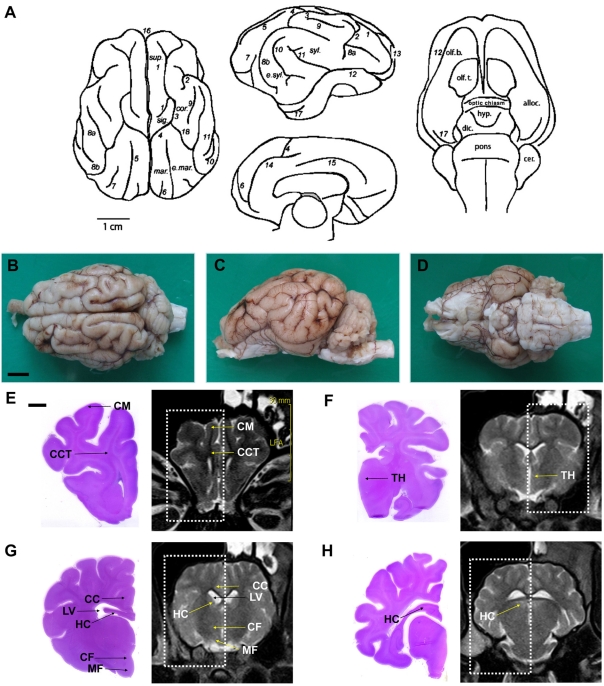 | Figure 1A minipig brain depicting (A) drawings of sulci and gyri patterns: (1) cruciate sulcus; (2) diagonal sulcus; (3) coronal sulcus; (4) ansate sulcus; (5) lateral sulcus; (6) entolateral sulcus; (7) ectolateral sulcus; (8) suprasylvii sulcus, (a) anterior, (b) posterior; (9) sulcus naris; (10) ectosylvia sulcus; (11) sylvii sulcus; (12) rhinal sulcus; (13) praesylvii sulcus; (14) splenial sulcus; (15) cingulate sulcus; (16) longitudinal sulcus; (17) sagittal sulcus; (18) coronal sulcus. cer., cerebellum; cor., coronal gyrus; dic., diencephalons; e.mar., ectomarginal gyrus; e.syl., ectosylvian gyrus; hyp., hypothalamus; mar., marginal gyrus; olf. b., olfactory bulbus; olf. t., olfactory tubercle; sig., sigmoid gyrus; sup., superior frontal gyrus; syl., sylvian gyrus [23]. Scale bars represent 1 cm. (B) superior, (C) lateral and (D) inferior view of a perfusion-fixed whole brain. Normal structures of cerebrum, axial section. Scale bars represent 1 cm. H&E-stained histological section and MR image at the level of the anterior of corpus callosum (E) and the optic chiasm region (F). (G) Histological section and MR image at the level of the mammillo-thalamic tract (MF) and the column of fornix (CF) seen as four hypothalamic, delicately stained rounded structures. In the corresponding MRI, CF dorsally and MF ventrally are found as four round structures in the hypothalamus. (H) Histological section and MR image at the level of the front of posterior of corpus callosum. Scale bars represent 0.5 cm. CM, cerebral medulla; CCT, cerebral cortex; TH, thalamus; LV, lateral ventricle; CC, corpus callosum; HC, hippocampus. |
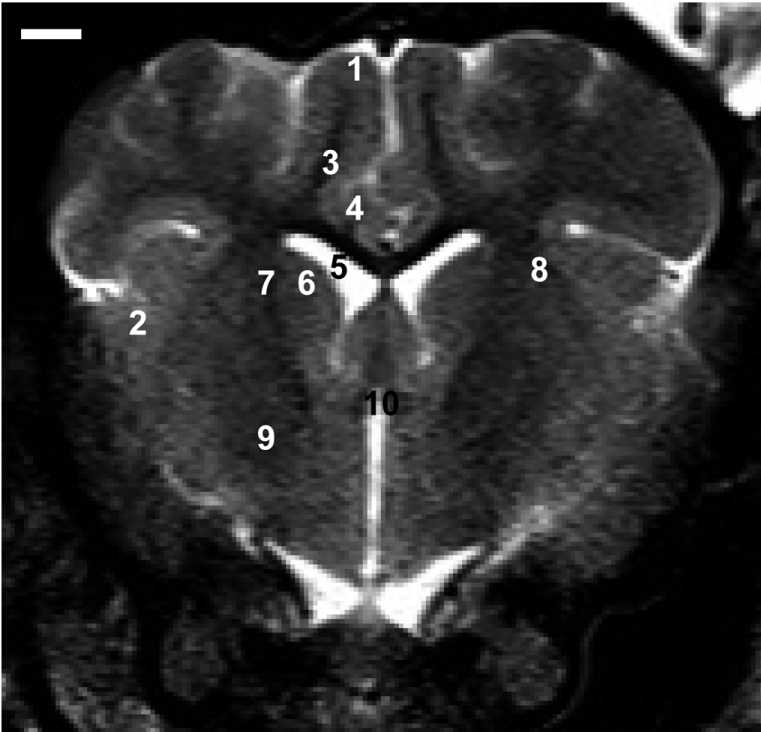 | Figure 3Representative axial T2-weighted images at the anterior commissure level. Frontal cortex (1), temporoparietal cortex (2), subcortical white matter (3), corpus callosum (4), lateral ventricle (5), caudate nucleus (6), internal capsule (7), putamen (8), globus pallidus (9), and anterior commissure (10) are present. Scale bar represents 0.5 cm. |
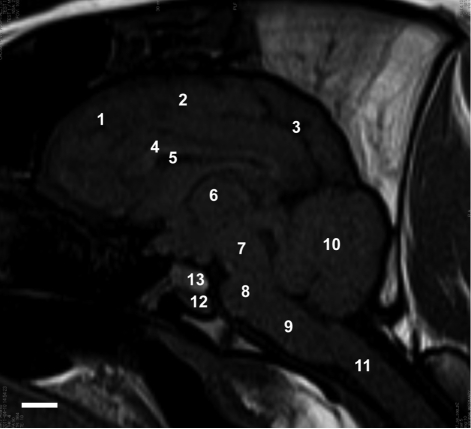 | Figure 4Sagittal T1-weighted MRI. frontal lobe (1), parietal lobe (2), occipital lobe (3), corpus callosum (4), lateral ventricle (5), thalamus (6), midbrain (7), pons (8), medulla oblongata (9), cerebellum (10), spinal cord (11), adenohypophysis (12), and neurohypophysis (13). Sagittal T1-weighted MRI shows the posterior pituitary lobe. The adenohypophysis is isointense relative to gray matter and the neurohypophysis is hyperintense. Scale bar represents 1 cm. |
 | Figure 5Striatum identified as a large two-compartment structure divided into the putamen (PU) and the caudate nucleus (CN) by the internal capsule (IC). Laterally, the PU is separated from the cortical tissue by the external capsule (A). Posteriorly, only the tail of the CN is visualized and the PU becomes dominate. The anterior commisure (AC) connects the hemispheres ventrally (B). At the AC level, a band of white substance, pars posterior of the AC, separates the most posterior parts of the PU from the globus pallidum (GP). Subdivision of the GP into internal and external segments was not possible (C). Scale bar represents 1 cm. LV, lateral ventricle; CC, corpus callosum. |
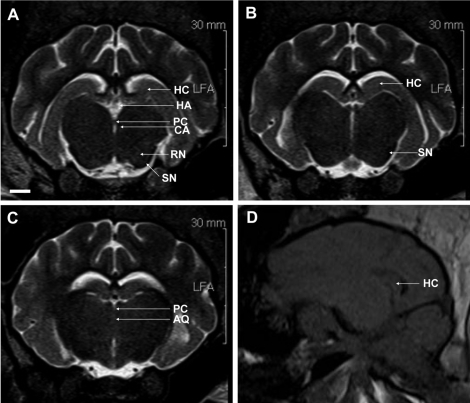 | Figure 6The substantia nigra (SN) is seen as a band of white matter dorsal to the dark cerebral peduncle, ventro-lateral to the bilaterally visible red nucleus (RN), a distinct rounded structure separated from the midline by the midbrain tegmentum. Habenular nuclei (HA) are also visualized. The hippocampus is seen in its full extent dorsal to the thalamus, sweeping around it to the temporal lobe (A-C). Sagittal T1-weighted MRI shows the hippocampus (D). Scale bar represents 0.5 cm. HC, hippocampus; HA, habenular nuclei; PC, posterior commissure; CA, cerebral aqueduct; SN, substantia nigra; RN, red nucleus; AQ, cerebral aqueduct. |




 PDF
PDF ePub
ePub Citation
Citation Print
Print


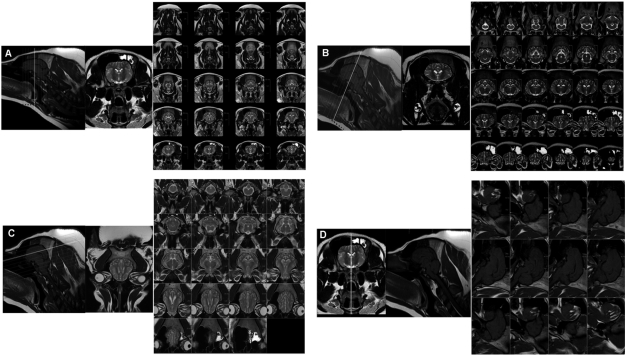
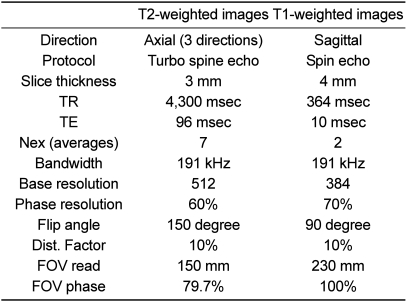

 XML Download
XML Download